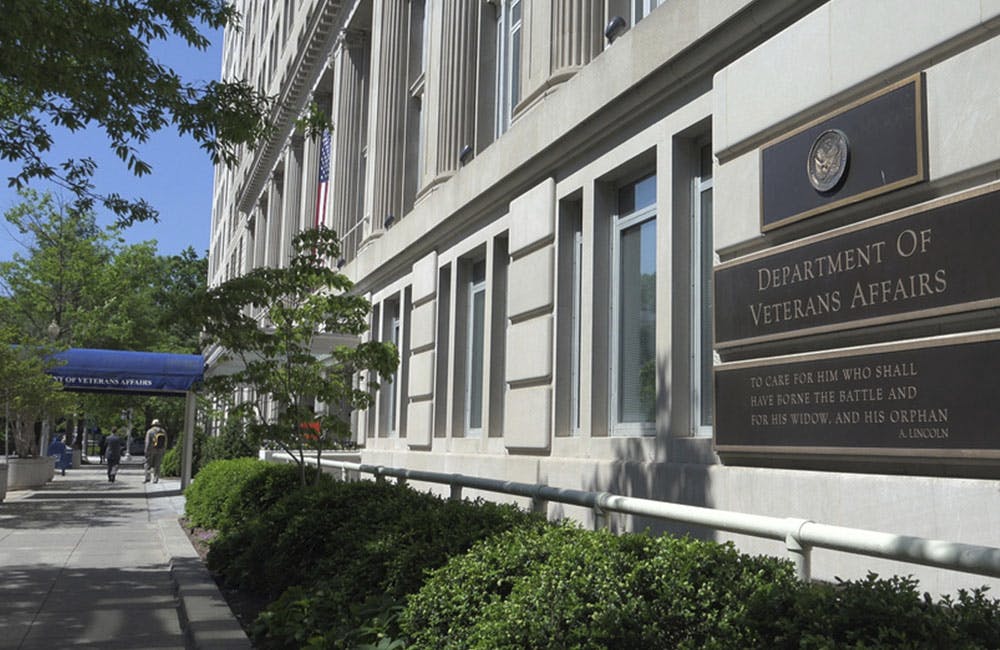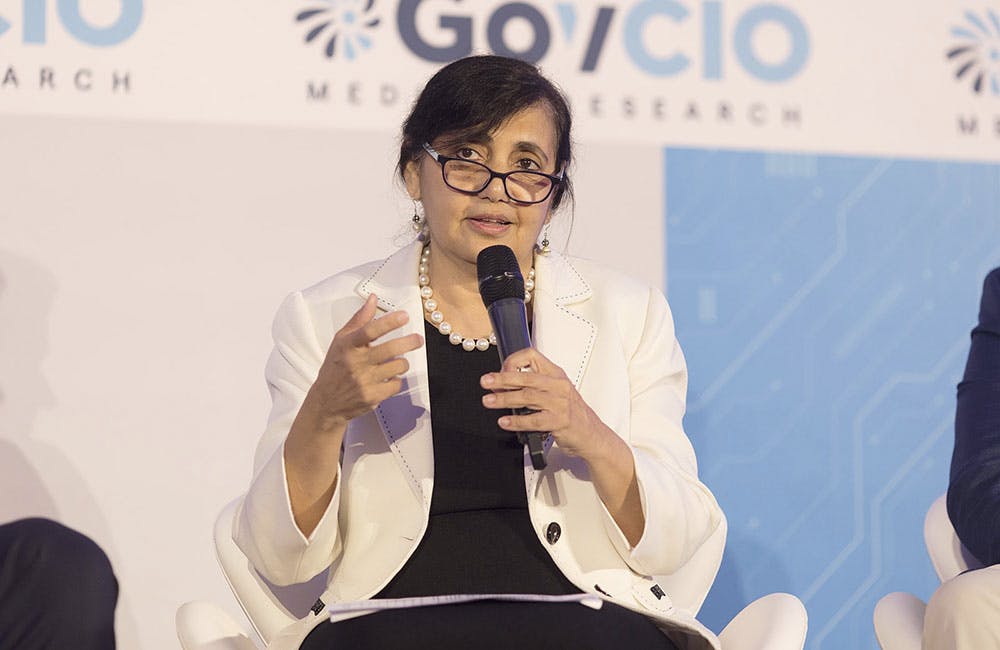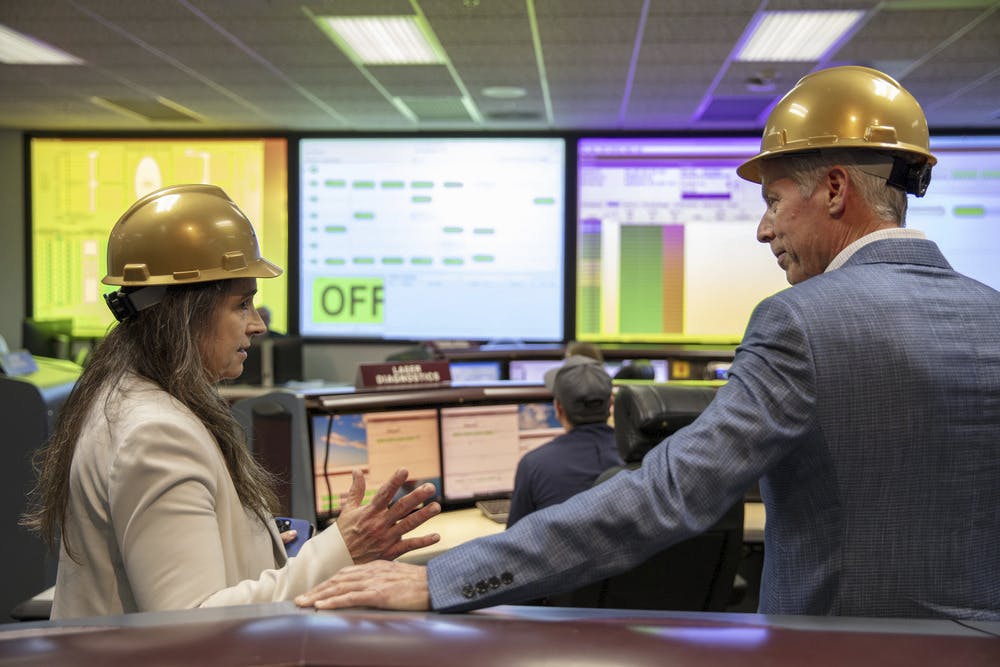NSA Looks to Hybrid Cloud Initiative as Future Cyber Model
Gen. Timothy Haugh said the program bringing in commercial cloud solutions to NSA can help the agency speed up cybersecurity modernization.

The National Security Agency’s Hybrid Compute Initiative (HCI) represents the future of tailoring industry advancements to NSA’s mission, Cybercom Commander and NSA Director Gen. Timothy Haugh said Thursday at the Billington Cybersecurity Summit in Washington, D.C.
“The Hybrid Compute Initiative is a really good example of what it will look like for our future,” said Haugh. “There are going to be some very unique technology things that will be bespoke within the intelligence community, but we have to be able to leverage the rapid advancements that are occurring in industry.”
Launched in 2021, HCI focuses on using commercial-based cloud computing capabilities in addition to maintaining some operations and data internally on servers. Commercial solutions within HCI must fulfill agency requirements for capacity, security and scalability.
Haugh added that NSA intends to follow industry’s rapid evolution in cloud security to ensure the agency is up to date.
“We cannot ask industry to adapt to us. We have to adapt to industry so that we can take every update and every advancement and leverage them in a more rapid and clear way,” said Haugh.
Haugh said that HCI can be a blueprint for NSA to deliver capability in conjunction with the rapid advancement in commercial technologies like generative artificial intelligence.
“We really see [HCI] as a future model. Because for us, it’s all going to be about speed,” he added. “Certainly that is what industry is capitalizing on.”
Haugh also cited NSA’s Cybersecurity Collaboration Center (CCC) as critical to cooperation with the defense industrial base. Launched in 2020, the center shares actionable, contextualized threat intelligence with industry partners, and Haugh said its success is now influencing Cybercom’s approach to industry partnerships.
“We see [collaboration with industry] as foundational to be able to defend the department’s interest in cyberspace,” said Haugh. “Today, that’s over 1,200 partnerships through [CCC]. Increasingly, the Defense Department is also asking the U.S. Cyber Command to be able to grow partnerships in this area so that we can, every day, work with our industry teammates because this is a very unique domain.”
This is a carousel with manually rotating slides. Use Next and Previous buttons to navigate or jump to a slide with the slide dots
-

Modernizing Critical Infrastructure in the Face of Global Threats
Officials are expanding the latest strategies in boosting defense infrastructure, including securing satellite communications, upgrading enterprise-wide technology, optimizing data management.
20m watch -

DOD Accelerates Software Modernization with Agile DevSecOps Push
The Pentagon's software implementation plan tackles cultural hurdles and integrates security early to deliver critical capabilities faster.
6m read -

VA's Platform One Powers Rapid Innovation to Bolster Digital Services
VA's Platform One accelerates software development timelines from weeks to hours, ultimately enhancing digital services for veterans.
5m read -

The Next AI Wave Requires Stronger Cyber Defenses, Data Management
IT officials warn of new vulnerabilities posed by AI as agencies continue to leverage the tech to boost operational efficiency.
5m read -

Federal CIOs Push for ROI-Focused Modernization to Advance Mission Goals
CIOs focus on return on investment, data governance and application modernization to drive mission outcomes as agencies adopt new tech tools.
4m read -

DOD Can No Longer Assume Superiority in Digital Warfare, Officials Warn
The DOD must make concerted efforts to address cyber vulnerabilities to maintain the tactical edge, military leaders said at HammerCon 2025.
4m read -

Marine Corps Operation StormBreaker Slashes Software Delivery Timelines by 17x
New program aims to deliver critical digital capabilities to warfighters at the "speed of relevance" by overhauling traditional processes.
4m read -

Tracking CIOs in Trump's Second Term
Stay informed on the latest shifts in federal technology leadership as new CIOs are appointed and President Trump's second term takes shape.
6m read -

Inside Oak Ridge National Lab’s Pioneer Approach to AI
Energy Department’s Oak Ridge National Lab transforms AI vulnerabilities into strategic opportunities for national defense.
22m listen -

Modernization Strategies to Enable Energy Innovation
Lawrence Berkeley National Lab and Maximus experts explore the modernization strategies driving digital transformation and operational resilience within the energy sector.
33m watch -

DOE National Labs Launch New AI Tools for Operational Efficiency
The Energy Department's National Laboratories are using AI to increase operational efficiency and drive research efforts forward.
3m read -

Software Factories Accelerate Federal Modernization Outcomes
IT leaders from Nutanix and SAIC explain how software factories streamline tech development, modernize legacy systems and accelerate adoption of emerging technologies like AI.
34m watch
















